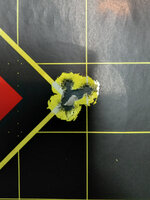- Messages
- 1,005
- Reactions
- 1,460
Eric Cortina would think you made a wise decision.Interesting, that is exactly what Redding said too. I wrote them. Anyway, I am jut going to FL size and forget neck sizing for the rest of my reloading life.
If you don't know who he is, look him up on YouTube. He has several videos about neck sizing and how much it improves accuracy and reliability.














